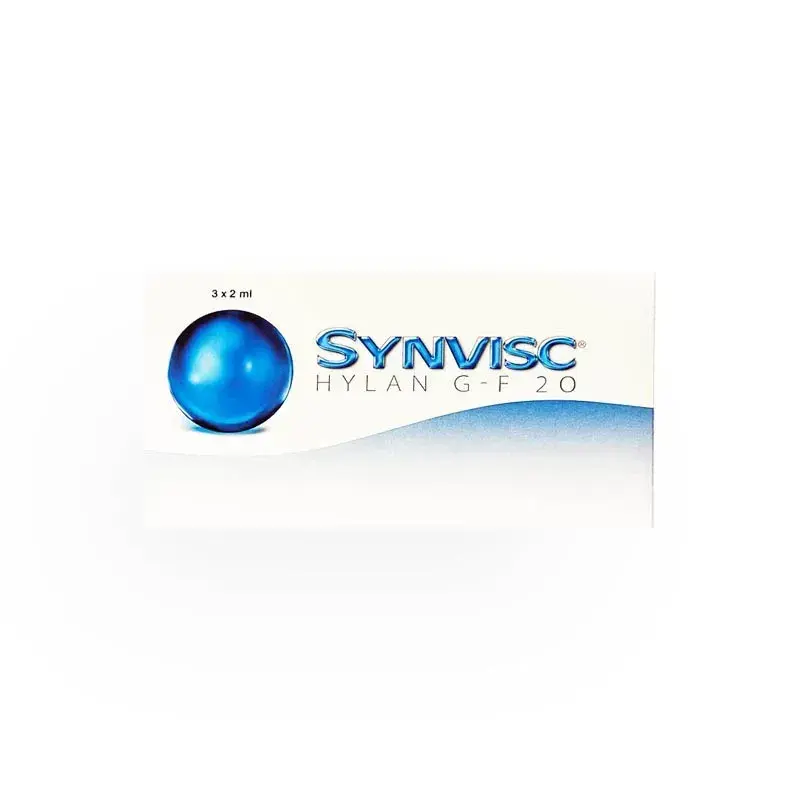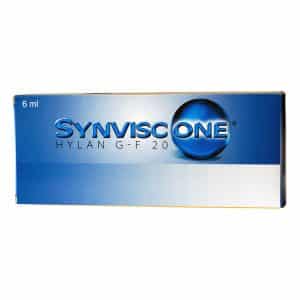Hyaluronic acid injections have been shown to significantly reduce pain and improve mobility in patients with knee osteoarthritis. A 2023 study found that most patients experienced a 50% improvement in pain, stiffness, and mobility after a single injection.
Synvisc, a hyaluronic acid-based injection, mimics the body’s natural joint fluid, providing lubrication and cushioning to reduce pain and enhance movement. While Synvisc is generally safe and effective, patients need to be aware of potential side effects before starting treatment.
In this article, we will provide a comprehensive list of Synvisc side effects, how to manage them, and what to expect during the treatment process.
Key Takeaways
- Synvisc injections are commonly used to treat knee osteoarthritis by providing lubrication and cushioning to the joint.
- Common side effects of Synvisc include pain and swelling at the injection site, temporary increase in joint pain, and rash or itching at the injection site.
- Rare side effects may include allergic reactions, joint infection, and nausea or vomiting.
- Serious side effects such as severe joint pain or swelling, difficulty breathing, and chest pain or tightness require immediate medical attention.
- Managing Synvisc side effects involves following post-injection care instructions, contacting a healthcare provider when necessary, and being aware of precautions for rare and severe reactions.
About: Medical Spa RX provides medical practices with premium products at the best prices. If you’re looking to buy Synvisc for your practice, the sales representatives at Medical Spa RX can give you guidance.
What is Synvisc?
Synvisc is a type of hyaluronic acid injection used to treat knee osteoarthritis. It is designed to mimic the natural synovial fluid found in healthy joints, providing lubrication and cushioning.
Synvisc knee injections primarily aim to reduce pain and improve mobility in patients with knee osteoarthritis. By enhancing the joint’s natural fluid, Synvisc helps to alleviate discomfort and improve overall joint function, offering a non-surgical option for managing osteoarthritis symptoms.
Common Side Effects of Synvisc
- Pain and Swelling at the Injection Site: Pain and swelling at the injection site are common after Synvisc injections. Patients may notice redness, heat, or fluid buildup in the knee, but these effects typically subside within a few days.
- Temporary Increase in Joint Pain: Some individuals may experience a temporary increase in joint pain following the injection. This is a known side effect and generally resolves within a short period.
- Rash or Itching at the Injection Site: A small number of patients may develop a rash or experience itching at the injection site. This reaction is typically mild and can be managed with over-the-counter remedies if necessary.
Rare Side Effects of Synvisc
- Allergic Reactions: While rare, some individuals may experience allergic reactions to Synvisc, such as itching, rash, or worsened joint pain. In severe cases, nausea or vomiting may occur. It’s important to monitor for these symptoms after receiving the injection.
- Joint Infection: There is a risk of joint infection if bacteria enter the knee during the injection. Symptoms include increased pain, swelling, redness, or warmth in the joint, which require prompt medical attention.
- Nausea or Vomiting: This is another rare side effect of Synvisc injections. Though uncommon, patients who experience these symptoms should report them to their doctor for further evaluation.
Serious Side Effects of Synvisc
- Severe Joint Pain Or Swelling: In rare cases, patients may experience severe joint pain or swelling after a Synvisc knee injection. This can occur immediately or weeks later, signaling an adverse reaction to the treatment.
- Difficulty Breathing: This is a serious side effect that can happen shortly after the injection. Immediate medical attention is crucial if this occurs, as it could indicate a severe allergic reaction.
- Chest Pain or Tightness: This is another rare but serious reaction to Synvisc. Patients experiencing these symptoms should seek emergency medical care, as it may indicate a life-threatening response to the injection.
Managing Synvisc Side Effects
Managing Synvisc side effects is crucial for ensuring a comfortable treatment experience. Here are some tips for handling common side effects:
- Pain or Swelling at Injection Site: Apply an ice pack to the affected area for 15-20 minutes to reduce swelling and discomfort.
- Mild Joint Pain: Over-the-counter pain relievers like acetaminophen can help alleviate minor pain.
- Rest: Avoid strenuous activities for at least 48 hours after receiving a Synvisc knee injection to allow your body to adjust.
It’s essential to contact a healthcare provider if you experience severe pain, swelling, or signs of infection, such as redness and warmth at the injection site. These symptoms could indicate a more serious reaction that requires medical attention.
Precautions are essential for rare and serious side effects, such as allergic reactions or severe joint pain. Discuss the Synvisc One pros and cons with your healthcare provider to fully understand the risks and benefits.
Conclusion
Understanding Synvisc and its potential side effects helps both doctors and patients make informed decisions about treatment. Common side effects, like mild pain at the injection site, are manageable, while rare issues, such as severe joint pain, require prompt attention. Being prepared to address any side effects is critical to ensuring a safe and effective experience.
Always consult your doctor if you experience any adverse reactions after a Synvisc knee injection. This ensures you stay safe while benefiting from pain relief and improved mobility.
FAQs
1. What is Synvisc, and how does it work?
Synvisc is a hyaluronic acid-based injection used to treat knee osteoarthritis. It mimics the natural fluid in joints, providing lubrication and cushioning, which helps reduce pain and improve mobility in patients who haven’t responded to other treatments.
2. What should I do if I experience side effects after a Synvisc injection?
Applying ice and resting the knee can help with mild side effects like swelling or pain. However, if you experience serious side effects, such as difficulty breathing or severe joint pain, contact your doctor or seek emergency care immediately.
3. How long does pain relief from Synvisc last?
Synvisc can relieve knee osteoarthritis symptoms for up to six months after a single injection. The treatment helps improve joint movement and reduce pain, making it easier to perform daily activities.
References
Rath L. Hyaluronic acid injections for knee pain: How it could help. Arthritis Foundation. https://www.arthritis.org/health-wellness/treatment/treatment-plan/disease-management/hyaluronic-acid-injections-for-knee-pain
Synvisc-One® Frequently Asked Questions. Synvisc-One. https://www.synviscone.com/what-is-synvisc-one/synvisc-faqs
Drugs.com. (n.d.). Synvisc-One side effects. Drugs.com. Retrieved from https://www.drugs.com/sfx/synvisc-one-side-effects.html























